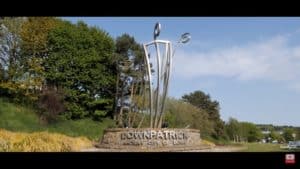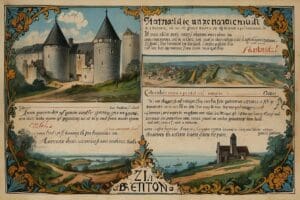The Soulful Sounds of Ireland: Exploring Traditional Irish Music
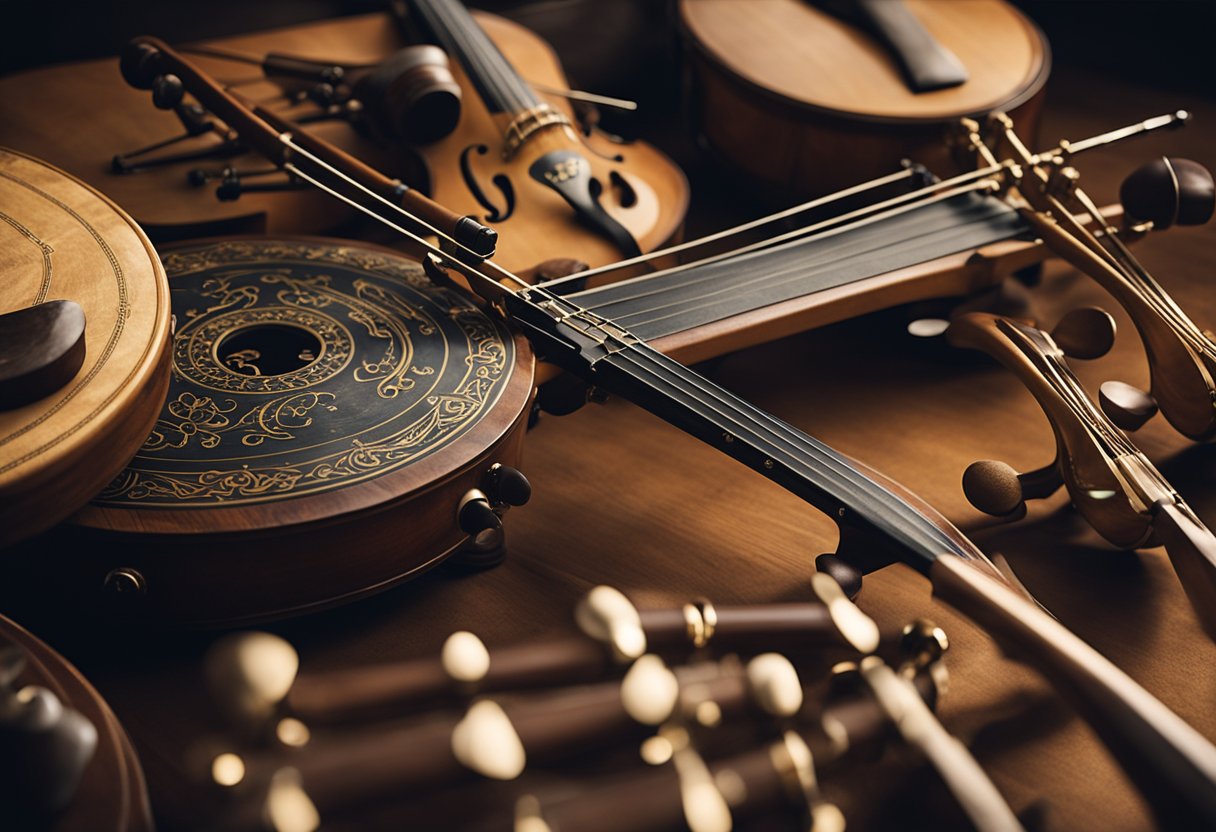
Updated On: April 22, 2024 by Maha Yassin
Traditional Irish music, a genre steeped in history and emotion, encompasses the soulful sounds that echo the spirit of Ireland. Our cultural heritage is melodiously preserved through the timeless tunes played on instruments ranging from the fiddle to the bodhrán. Each note and rhythm carries a tale from the past, inviting us to relive the narratives entwined with Irish identity for centuries.
We explore these instruments’ journey, from their historical evolution to their role in cultural celebrations and social gatherings. Whether it’s the haunting sound of the uilleann pipes or the cheerful trills of the tin whistle, the multifaceted landscape of traditional Irish music has made a significant global impact. Innovation in music production has allowed these traditional sounds to adapt while maintaining the essence of what makes Irish music distinct.
The Historical Evolution of Traditional Irish Music
Ireland’s music has undergone a fascinating transformation from ancient times to today, deeply ingrained in our cultural identity. We shall explore its progression from the early roots and medieval times, through revival efforts, to its modern global resonance.
Ancient Roots and Medieval Harps
Our musical journey begins in ancient Ireland, where the Celtic traditions set the foundational tone for a rich tapestry of soundscapes. The Celts conveyed their narratives and emotions primarily through an oral tradition, a vital component of our historical roots. The medieval harp emerged as a symbol during this era, known for its poignant strains that continue to echo through our cultural memory.
Revival and Preservation Efforts
As time progressed, Irish music faced periods of decline, where it risked being forgotten. However, the revival and preservation efforts in the 19th and 20th centuries were pivotal. Figures like Seán Ó Riada emerged, championing the renaissance of traditional Irish music. Their work reinvigorated our connection to the past, ensuring that traditional Irish instruments and tunes remained integral to our cultural identity.
Modern Adaptations and Global Influence
Finally, we witness the modern adaptations of Irish music, showcasing its versatility and global influence. The traditional forms have been interwoven with contemporary genres, creating a sound that resonates worldwide. This evolution reflects the adaptability of our music, which, while rooted in history, continues to grow and influence artists and audiences globally.
The Heart of the Melody: Fiddle and Violin
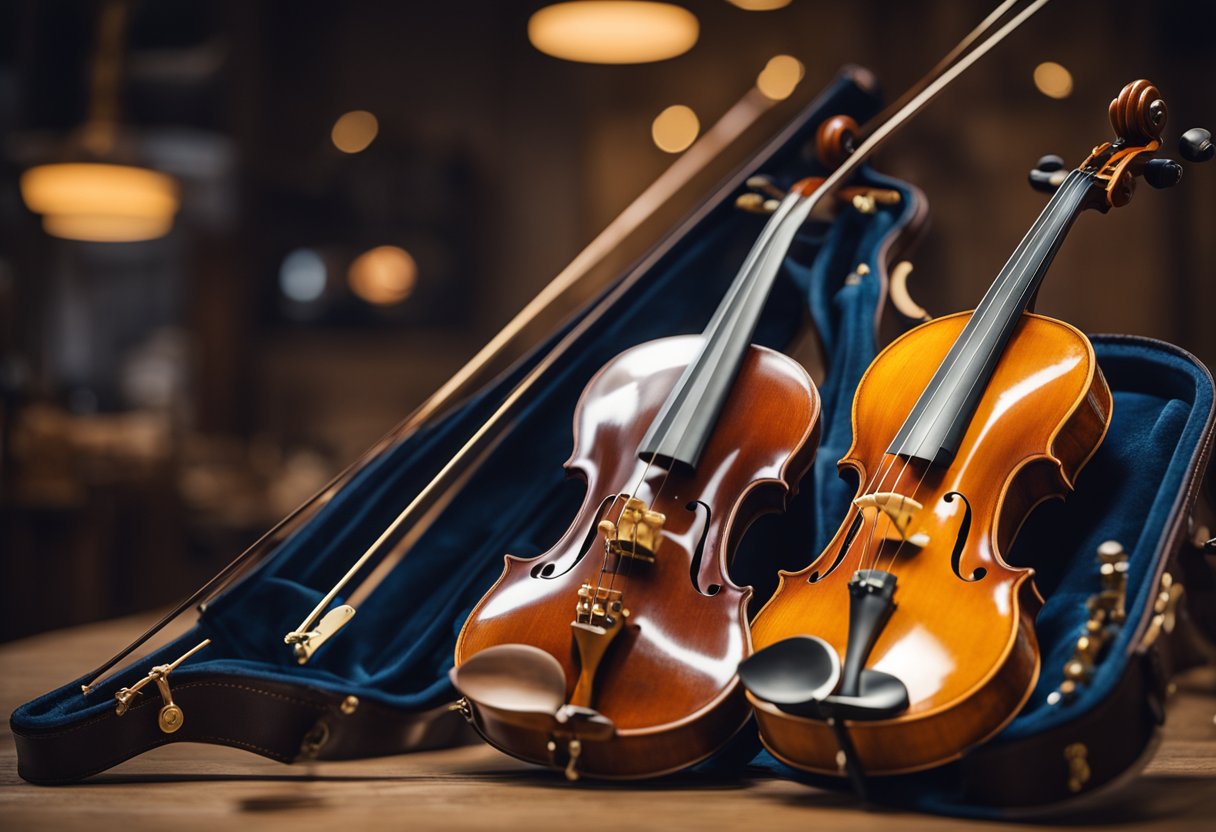
The fiddle is pivotal in Irish music, offering intricate and modal melodies central to the genre’s emotional resonance. Our examination will explore the technical aspects of playing and the historical figures who have shaped Irish fiddling.
Playing Techniques and Styles
In Irish music, the fiddle is often synonymous with the violin; the instrument’s style of play calls forth its distinctive sound. Fiddlers employ various bowing techniques and ornamentations – such as rolls, cuts, and slides – to create rhythmic drive and expressivity within a tune. Modal melodies, featuring scales such as Dorian and Mixolydian modes, are a staple in Irish fiddle music, contributing to its distinctive, soulful sound. These techniques are about playing notes and weaving a story that resonates with the rich tapestry of Irish history and culture.
Prominent Fiddlers in Irish Music History
Master musicians throughout history have greatly influenced Irish fiddle music. One such fiddler is Martin Hayes, whose artistry has pushed the boundaries of Irish traditional music while deeply respecting its heritage. His skill is drawing out an extraordinary range of emotions from the fiddle, transforming simple tunes into powerful narratives. Legends such as Michael Coleman, whose 78rpm recordings from the 1920s and 1930s immensely shaped the style of traditional Irish fiddle, and more contemporary players like Kevin Burke, are also vital in understanding the lineage and progression of Irish fiddle playing. The impact of these fiddlers is evidenced through the spellbinding, intricate melodies and emotional resonance that continue to captivate audiences today.
Rhythmic Soul: Percussion in Irish Music
Percussion instruments, particularly the bodhrán, serve as the heartbeat of traditional Irish music, laying the rhythmic foundation influencing the melody and the dance.
Bodhrán: The Iconic Irish Drum
The bodhrán is a frame drum that dates back centuries in its association with Irish music. Typically crafted from goatskin stretched over a round wooden frame, this instrument is known for its deep and resonant sounds. While it can vary in diameter, the typical bodhrán measures around 35 centimetres across, perfect for a player to hold in one hand while using a tipper, or beater, held in the other. This drum has evolved to keep the beat and enhance the aural landscape of tunes like jigs and reels, allowing the player to accentuate each piece’s dynamic highs and lows.
The Role of Rhythmic Patterns in Irish Dance
In Irish dance, the precise and rapid rhythmic patterns produced by the bodhrán are more than just accompaniment; they form an essential part of the performance. The drummer must have an innate connection to the dancers, providing a rhythmic drive that propels the intricate footwork of dances. The pace set by the dance rhythms can be the difference between a lacklustre display and a captivating show. With each bodhrán beat, dancers receive cues, allowing for synchronised and high-energy performances at the core of Irish dance’s appeal.
Uilleann Pipes: A Distinctive Irish Wind Instrument
The uilleann pipes boast a singular place in Irish music, acclaimed for their complex design and soulful sound capable of ornamentation and expression.
Construction and Mechanics
Uilleann pipes are a form of bagpipe, recognised as Ireland’s national wind instrument. Construction of these pipes involves a bellows powered by the elbow to inflate the bag, giving it its name, derived from the Irish term ‘píb uilleann’ meaning “pipes of the elbow.” Unlike many other bagpipes, uilleann pipes utilise modal scales that produce a rich and melodious sound, distinctive in traditional Irish music.
The components of uilleann pipes include:
- The bellows are strapped around the waist, and the right arm is used to pump air into the bag.
- The bag: which holds the air and regulates its flow.
- The chanter: the primary melody pipe played with the fingers.
- The drones: a group of pipes providing a constant harmonic backdrop.
- The regulators are equipped with keys to provide chordal accompaniment.
Masters of Uilleann Piping
In the realm of uilleann piping, Noel Hill stands as a master. His expertise and skill have contributed to the instrument’s evolution. He is known for his precision and dexterity, especially in the execution of intricate ornamentation, which is crucial in expressing the nuance of Irish music.
Following in the footsteps of traditional masters, contemporary uilleann pipers continue to honour the timeless sounds of this wind instrument. Their dedication to the craft ensures the legacy of uilleann pipes remains vibrant within the rich tapestry of Irish music.
The Strum of Strings: Harp and Guitar
In the tapestry of Irish music, the harp and guitar are threads that weave through centuries of tradition and innovation. Both instruments play pivotal roles in Irish storytelling and the evolving soundscape of folk music.
The Harp’s Role in Irish Storytelling
The Irish harp is synonymous with our cultural identity and is deeply connected to the art of Irish storytelling. Its soothing tones have historically underscored tales of nostalgia and love, eliciting profound emotional responses from listeners. The harp was a cherished companion to the ancient practice of sean-nós singing, a poignant, unaccompanied style known for its emotional intensity and ornamentation.
- Cultural Significance: Considered Ireland’s national symbol, the harp has been central to our nation’s aesthetic for centuries.
- Notable Harpists: Figures such as Liam O’Flynn have immortalised the harp through performances of songs like “Planxty”, further cementing the harp’s place in the Irish consciousness.
The harp remains a potent emblem of our cultural heritage, echoing the voices of the past and continuing to inspire modern narratives.
Guitar’s Influence on Modern Irish Music
Our journey through strings must also pause to recognise the guitar’s impact on contemporary Irish music. Once adopted, this versatile instrument enriched Irish melodies with new rhythms and harmonies, enabling a creative syncretism of traditional tunes with modern sensibilities.
- Adaptation: Originally from outside our culture, the guitar was embraced and woven into our folk music tapestry.
- Contemporary Usage: Bands and artists leverage the guitar’s flexibility to back traditional tunes and innovate within the genre across various styles and performances.
As we continue celebrating our treasured traditional music, the guitar stands firmly in our present, harmonising old and new. At the same time, we honour the legacy of the strings that narrate our collective saga.
Portable Melodies: Tin Whistle and Accordion
In this section, we’ll explore two quintessential Irish instruments known for their portability and the joyous celebration they bring to music: the tin whistle and the accordion.
Tin Whistle: The Popular Pocket Instrument
The tin whistle, often called the penny whistle, is a staple in traditional Irish music. This slender, cylindrical instrument is most commonly made of metal and features six holes. Despite its simplicity, the tin whistle produces a clear, piercing tone that can express many emotions, from melancholic to exuberant. We often hear it play the lead melody in an ensemble, employing various scales and ornamentations like cuts, strikes, and iconic rolls, adding a distinctive Irish flavour to the music.
- Key Characteristics:
- Material: Usually made of brass or nickel.
- Ornamentation: Cuts, strikes, rolls.
- Tonal Range: Diatonic (seven notes of the major or minor scale).
Accordion and Concertina: Bellows-Driven Traditions
Accordions and concertinas are bellows-driven instruments integral to Irish folk ensembles. While the accordion is recognised for its rich, robust sound capable of melody and accompaniment, the concertina is more compact with a distinct, sweet, melodious tone. Both instruments use a keyboard or buttons to control the pitch, with the bellows supplying air to create the sound. These instruments’ versatility has cemented their place in Irish music, adept at driving a tune forward or adding layers to harmony.
- Accordion:
- Tipo: Piano or button.
- Function: Melody and/or accompaniment.
- Concertina:
- Features: Hexagonal body, button keys.
- Use: Melody with emphasis on articulation.
Stringed Companions: Banjo, Bouzouki, and Guitar
The heart of Irish music thrives on the vibrant strumming and plucking of its stringed instruments. Within this melodious array, the banjo, bouzouki, and guitar stand out for their unique flavours and contributions to the tapestry of sounds characteristic of Irish culture.
Banjo: The American Cousin in Irish Music
Our banjo has Americana roots yet has become an indispensable asset in the Irish folk ensemble. Originally brought into the Irish soundscape by emigrants, it has carved its niche firmly within our music. It brings a distinctive twang to the rhythm, often played with vigour and speed, that complements the fleet-footed jigs and reels characteristic of our musical heritage. Irish banjo players typically opt for a four-string version and employ the same tunings as the fiddle or mandolin, contributing to the vibrant, syncopated rhythms that make our folk music so inviting for improvisation.
Bouzouki: The Greek Addition to Irish Chords
Conversely, despite its Greek origins, the bouzouki is a relatively recent entrant, dating back only as far as the 1960s. Yet, it has become synonymous with contemporary, traditional Irish music, and its place in our cultural soundscape is unchallenged. Shapeshifted from its Mediterranean roots, the Irish bouzouki is strung with eight strings in pairs, known as courses, and is played with a plectrum to produce a deep, jangly tone. Its tuning, which diverges from the original Greek style, is tailored to complement Irish melodies and harmonies, adding a rich chordal backbone to sessions and performances alike. The instrument’s broad fretboard allows for extensive melodic exploration, while the open tunings commonly used lend themselves to resonant strumming and intricate finger-picked accompaniments.
This section delved into the potent role of stringed instruments – banjo, bouzouki, and guitar – and their narratives within the cultural framework of Irish music. These instruments have been embraced and adapted to weave complex auditory tapestries, their strings resonating with Irish history and the musicians’ innovative spirit.
Cultural Celebrations and Social Gatherings
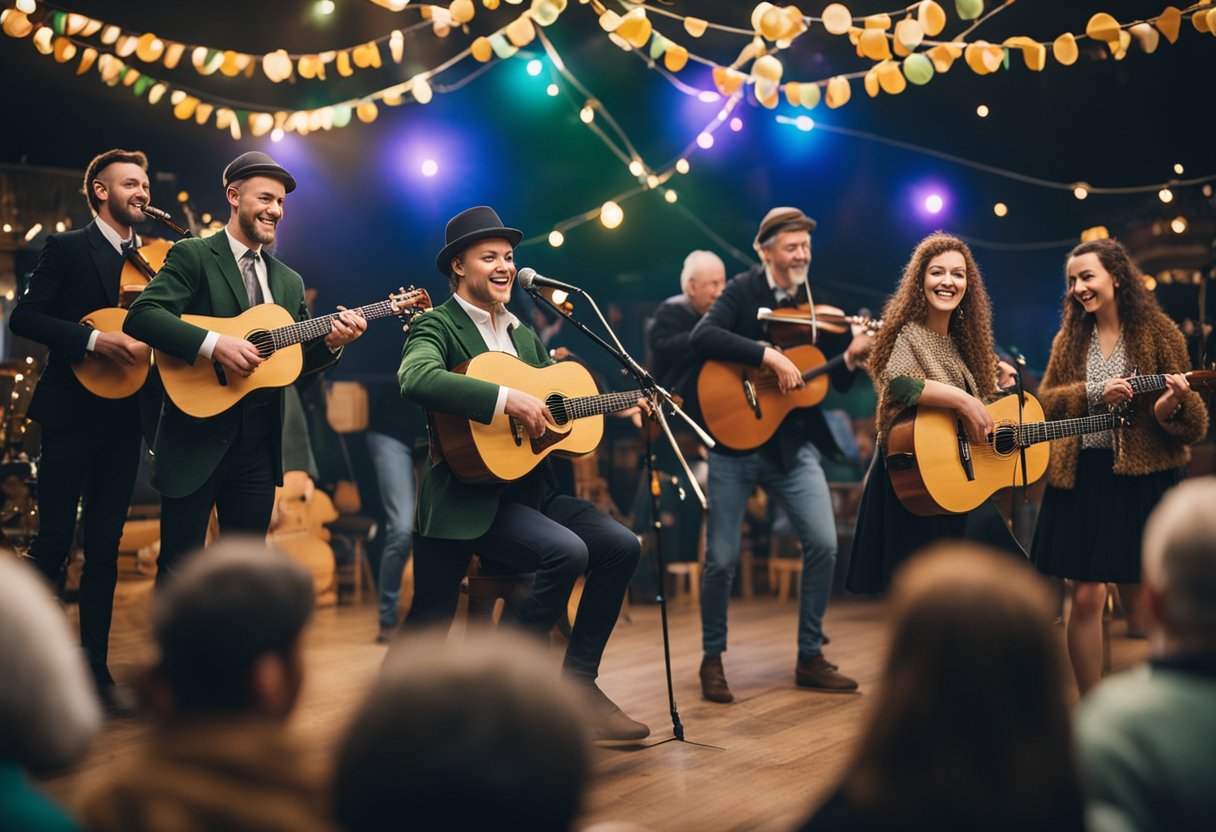
We recognise that the heart of Irish music thrives in the cultural celebrations and social gatherings that dot the island. The essence of Ireland’s cultural heritage is most tangibly experienced within these vibrant community events and pub sessions.
Festivals and Competitions
Ireland is renowned for its rich tapestry of festivals showcasing the best Irish music. From local competitions where newcomers can cut their teeth to large-scale festivals that attract international talents, these events reinforce the strong communal spirit and the enduring Irish influence on the global stage. The Fleadh Cheoil, for example, stands as Ireland’s most important music competition and festival, drawing participants and spectators from across the world, eager to immerse themselves in the traditional Irish music scene.
Pub Sessions and Community Events
In the nooks of many a local pub, nestled in towns and cities alike, you’ll find pub sessions—informal gatherings where musicians come together to play. These sessions are more than mere entertainment; they are a thread in the fabric of Irish life, connecting people through melodies and dance. The community aspect is paramount, with everyone from regular locals to first-time visitors welcomed. Not limited to the confines of Ireland, these gatherings at the Irish Centre and beyond are pivotal in maintaining and spreading Irish culture through modern productions and global Irish centres.
Innovation in Irish Music Production

In our journey through the soulful sounds of Ireland, we’ve witnessed a preservation of tradition and significant innovation in music production. Our section will illuminate how contemporary Irish music has embraced state-of-the-art studio techniques and software to elevate its beloved melodies and rhythms.
Studio Techniques and Sound Engineering
When producing Irish music, sound engineers utilise various studio techniques to enhance the acoustic qualities of traditional instruments. EQ (equalisation) is pivotal in shaping the sound of these instruments, allowing us to accentuate their unique tonal characteristics or reduce frequencies that may clash in a mix. Panning tools help us to place sounds within a stereo field, creating a more immersive listening experience that reflects a live performance.
In addition, mixers and studio effects such as reverb and delay are employed to add depth and ambience to tracks. These tools forge a symbiotic relationship between the old and the new, as the time-honoured sounds of the fiddle and uilleann pipes are enveloped in modern sonic landscapes.
The Digital Era: Kontakt and Other Music Software
With the advent of the digital era, music software has become an integral part of modern productions. Kontakt, a powerful sampler by Native Instruments, and its accompanying Kontakt Player have opened up new possibilities for Irish music.
These tools allow us to replicate traditional instruments’ sounds with astonishing authenticity digitally. By doing so, we offer musicians and producers worldwide the opportunity to incorporate Irish elements into diverse musical genres. Using Kontakt also facilitates easier manipulation of sounds, such as applying studio effects or integrating with digital compositions, broadening the horizons of Irish music production.
The Global Impact of Irish Music
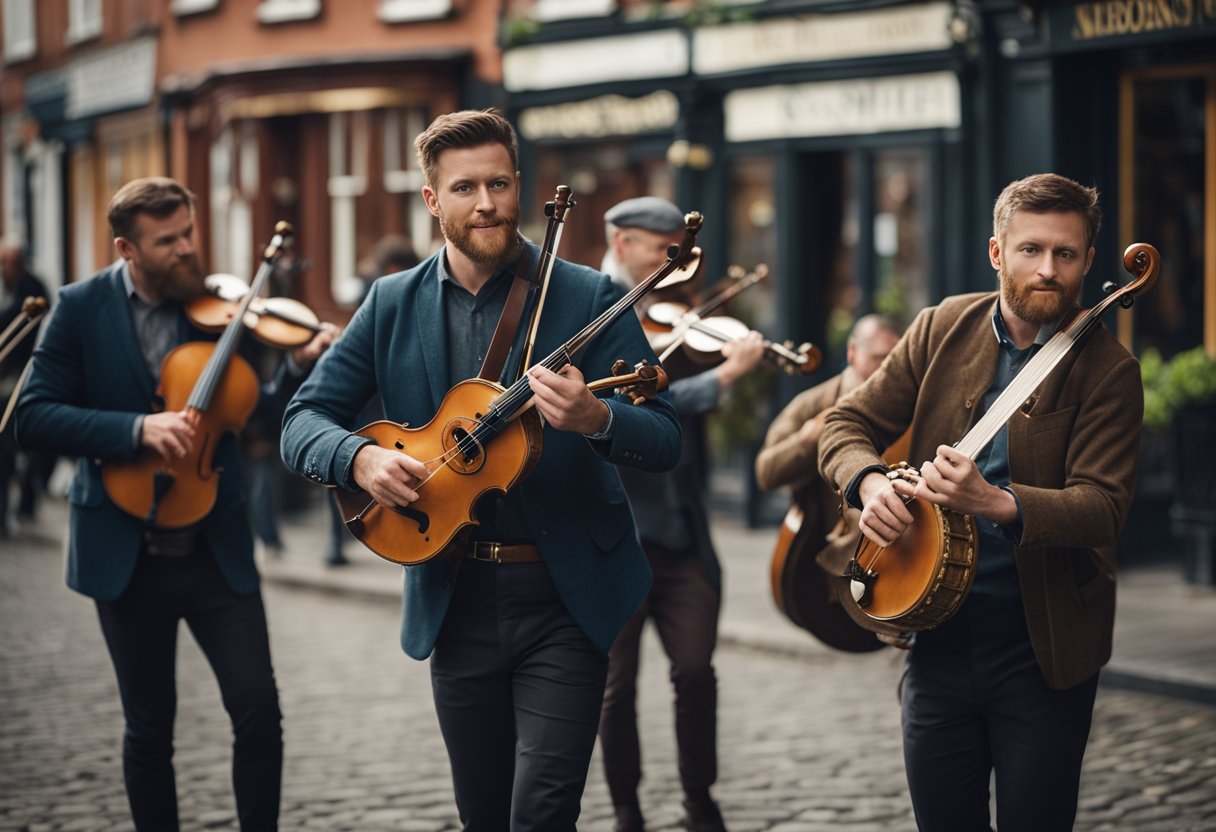
Our exploration of Irish music reveals a remarkable journey from local stages to global harmony. Recognizing its extensive influence on the world is essential as we delve into how traditional Irish sounds have inspired artists and audiences worldwide.
Influences on Contemporary Music Genres
Irish traditional music has intertwined with multiple music genres, infusing a soulful touch to contemporary sounds. Bands such as Altan have brought the melodies of Irish folk music into the hearts of the international community, often intersecting with pop-rock and world music. Their album, Spotlight Collection: Ireland, illuminates the adaptability and timelessness of Irish tunes.
Lists like Rolling Stone’s influential albums recognise Irish influences across various genres. An evident illustration is rock music, where the cultural significance of Irish rhythms and instrumentation is manifested. This influence extends from traditional jigs and reels to the powerful ballads contributing to the evolution of rock.
Irish Artists on the World Stage
Irish singers and songwriters have indeed taken the world by storm. Rising stars and established names alike carry forward Ireland’s musical legacy, blending the depth of traditional narratives with modern flair. Hozier, an artist known for his poetically profound lyrics accompanied by his soulful voice, stands as a testament to this global ascendence.
Our acknowledgement of these artists’ achievements on the world stage emphasises our shared heritage in music. The universal language of music resonates clearly across borders, and Irish music, in particular, continues to captivate audiences worldwide, playing a pivotal role in connecting cultures and transcending geographical divides.
Frequently Asked Questions
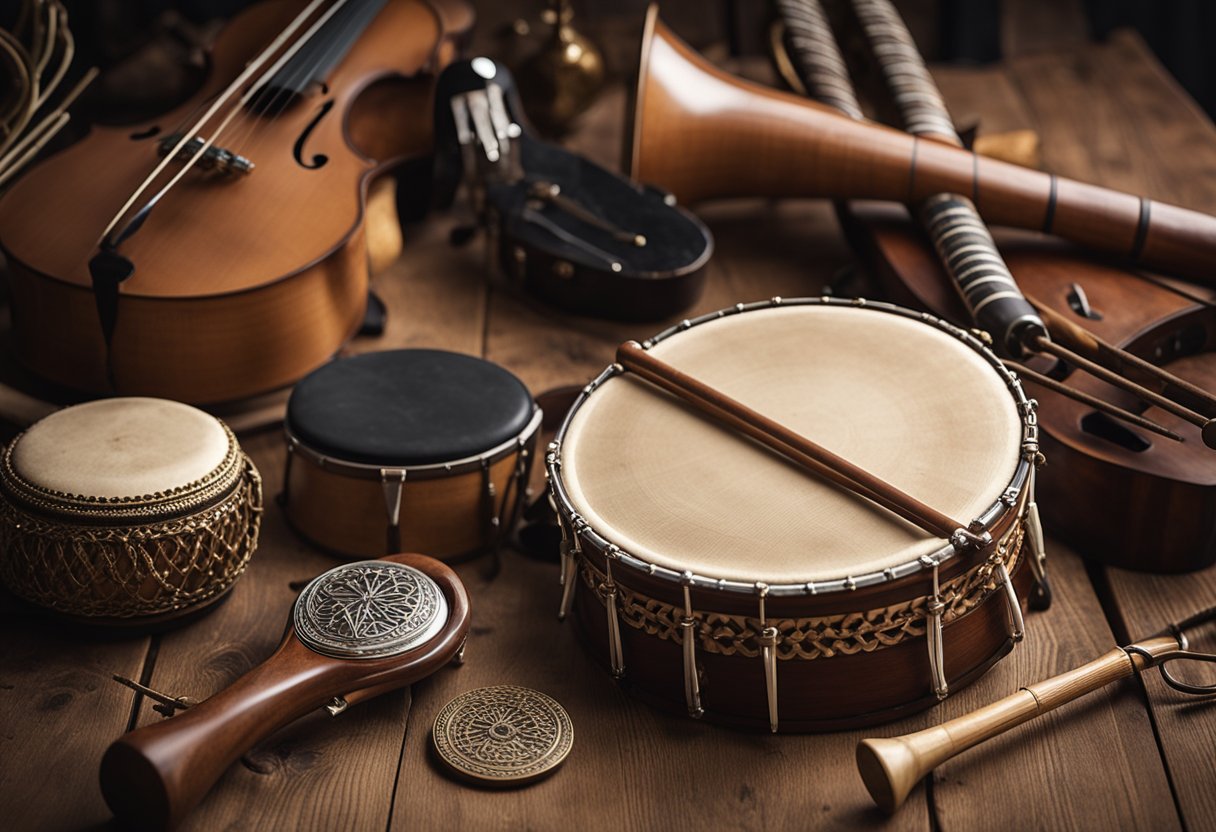
Exploring traditional Irish music’s rich tapestry, we encounter many common queries. Let’s address these to deepen our understanding of this cherished musical heritage.
Which instruments are considered quintessential for traditional Irish music?
The fiddle, tin whistle, uilleann pipes, and bodhrán are at the heart of traditional Irish music. These instruments have been central to Irish culture for centuries, each contributing its distinct voice to the ensemble.
Could you describe the characteristics of authentic Irish folk music?
Authentic Irish folk music typically features a melodic simplicity, allowing for expressive ornamentation. The music often includes recurring themes of love, emigration, and history, played with a lively yet sometimes haunting quality.
What is the name of the popular wind instrument featured in traditional Irish tunes?
The tin whistle, or the penny whistle, is the beloved wind instrument often heard in traditional Irish tunes. Its distinctive, high-pitched melodies are a staple of Irish music.
What gathering typically involves the performance of traditional Irish music?
Sessions, informal gatherings in pubs or homes, are where musicians come together to perform traditional Irish music. These sessions are convivial events that celebrate the communal spirit of Irish music.
How do Irish string instruments contribute to the genre’s distinctive sound?
Irish string instruments such as the harp and fiddle play a pivotal role. They provide a rich harmonic foundation and are known for their rapid, intricate melodic phrasing, which gives the music its characteristic bounce and liveliness.
In what social contexts is traditional Irish music most commonly performed?
Traditional Irish music is frequently performed at festivals, weddings, funerals, and communal dances. It thrives in social situations that emphasise community and shared experiences.




